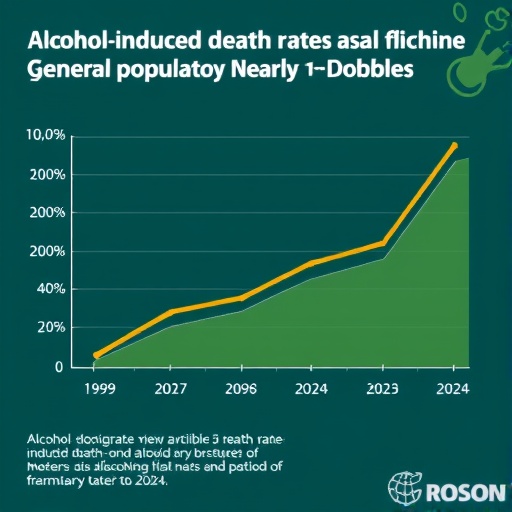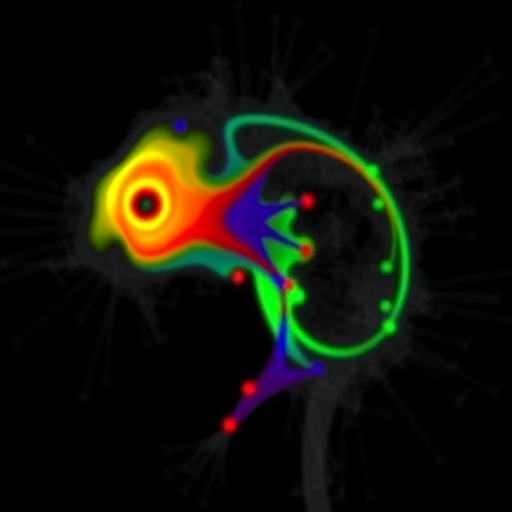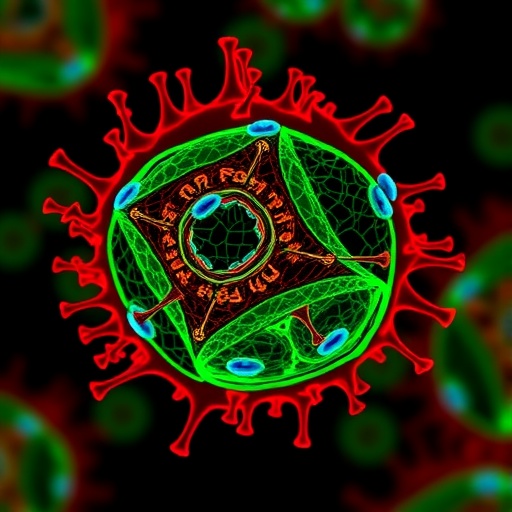Over the past quarter-century, the United States has witnessed a disturbing escalation in alcohol-induced mortality rates, nearly doubling since 1999. A recent comprehensive study led by Dr. Tony Wong and colleagues at the University of California, Los Angeles, and published on September 17, 2025, in PLOS Global Public Health, highlights the troubling trends in these deaths across multiple demographic dimensions including race, sex, age, and geography. This meticulous observational analysis reveals not only the steady climb of fatalities linked directly to alcohol consumption but also focuses on how the COVID-19 pandemic amplified these public health crises, particularly among vulnerable groups.
The study draws attention to a sharp spike in alcohol-induced deaths coinciding directly with the onset of the COVID-19 pandemic in 2020, a period marked by widespread social isolation, economic uncertainty, and disruptions in healthcare access. As society grappled with lockdowns and social distancing measures, individuals with alcohol use disorders found themselves cut off from treatment and support services. The result was a significant surge in mortality rates in 2021, peaking at 54,258 deaths attributed exclusively to alcohol-related causes, a figure alarmingly higher than those recorded in preceding years.
Central to the findings is the identification of alcoholic liver disease as the predominant cause behind this fatal trend, supplemented by deaths related to alcohol-induced mental and behavioral disorders. The methodical exclusion of chronic diseases often linked to long-term alcohol use, such as certain cancers and cardiovascular complications, implies that the real toll of alcohol-related fatalities might be even more severe than reported. This underscores the imperative for a nuanced understanding of alcohol’s impact on public health, moving beyond the acute effects to incorporate the chronic burdens often overlooked.
The demographic disparities revealed by this research are stark. Males continue to die from alcohol-induced causes at higher rates overall; however, the most precipitous increases in mortality occurred among young women aged 25 to 34. This group experienced a staggering 255 percent rise in death rates, from 0.9 per 100,000 in 1999 to 3.2 per 100,000 in 2024, signaling a dramatic narrowing of the gender mortality gap. In fact, for this age bracket, the male-to-female mortality ratio shrank from three-to-one in 1999 to two-to-one in 2024, pointing to a shifting epidemiological landscape where women are increasingly vulnerable.
Parallel to gender disparities are racial and ethnic dimensions that highlight enduring inequalities. The American Indian and Alaska Native (AIAN) population remains disproportionately affected throughout the observed timespan. Male AIAN individuals experience alcohol-induced mortality rates three times higher than white males, whereas female AIAN mortality rates soar to four times higher than those of white females. The data also illustrate alarming monthly surges in alcohol-related deaths during the early pandemic months, with AIAN males experiencing increases as high as 40%, persisting at elevated levels for nearly four years following.
Such disproportionate impacts echo broader systemic issues that extend beyond individual behavior, pointing to structural barriers like limited access to healthcare, socioeconomic disadvantages, and historical trauma that exacerbate health vulnerabilities within these communities. The study’s geographic analysis further confirms that these trends are widespread across U.S. counties, with the average mortality rate remaining about 25% higher in 2024 compared to pre-pandemic levels in 2019, emphasizing that this is a national crisis with no region untouched.
Another particularly troubling finding involves young males aged 25-34, who saw their alcohol-induced death rate jump nearly 188% from 2.3 to 6.5 fatalities per 100,000 over the same 25-year period. While the increase is less steep than in young females, it elucidates the ongoing risks facing this demographic and the inadequacy of current intervention strategies. These figures demand attention to age-specific prevention and treatment models that address the unique social and psychological dynamics fueling excessive alcohol consumption.
The timing of these surges during the COVID-19 pandemic is crucial for understanding the complex interaction between public health emergencies and substance use disorders. Pandemic-related stressors such as job loss, isolation, mental health deterioration, and disruption of addiction services converged to create a “perfect storm,” exacerbating risk factors and hindering harm reduction efforts. The persistence of elevated alcohol-induced mortality rates into 2024, years after the initial pandemic wave, signals a prolonged aftermath that public health systems must urgently address.
The study’s authors, including senior author Maria R D’Orsogna, emphasize that the gender convergence in mortality signals changing social dynamics and possibly increased alcohol availability or harmful consumption patterns among women. This trend challenges traditional assumptions about gendered drinking behaviors and mandates a recalibration of public health messaging and policy to effectively target and support women at elevated risk.
Importantly, the authors stress the need for targeted policy reforms aimed at curtailing excessive alcohol consumption and widening access to evidence-based treatment modalities. Given the scale and persistence of these mortality trends, interventions must be multifaceted, incorporating not only healthcare services but also socio-economic support, cultural competency in treatment programs, and community-driven initiatives. Addressing alcohol-induced mortality is not merely a clinical challenge but a societal one demanding coordinated responses.
This body of work draws from a rich dataset sourced from the Centers for Disease Control and Prevention’s National Vital Statistics System, honing in on 14 specific alcohol-induced causes of death. The rigorous methodological approach ensures high validity and reliability in capturing trends over a prolonged timeframe, providing an invaluable resource for policymakers, researchers, and healthcare providers striving to grasp and mitigate the crisis.
In conclusion, the surge of alcohol-induced deaths in the United States, markedly accelerated by the COVID-19 pandemic, reveals a complex epidemic layered with demographic disparities and deep-rooted social inequities. The near doubling of mortality rates over 25 years, the disproportionate rise among young women and AIAN populations, and the persistent elevation during the pandemic and beyond collectively signal an urgent call for enhanced research, preventive measures, and comprehensive healthcare strategies. This study illuminates the path forward in tackling one of modern society’s most insidious public health threats.
Subject of Research: People
Article Title: Alcohol-induced deaths in the United States across age, race, gender, geography, and the COVID-19 pandemic
News Publication Date: 17-Sep-2025
Web References: http://dx.doi.org/10.1371/journal.pgph.0004623
References: Wong T, Böttcher L, Chou T, D’Orsogna MR (2025) Alcohol-induced deaths in the United States across age, race, gender, geography, and the COVID-19 pandemic. PLOS Glob Public Health 5(9): e0004623.
Keywords: alcohol-induced mortality, COVID-19 pandemic, alcoholic liver disease, demographic disparities, American Indian Alaska Native, gender gap, young adults, public health policy, epidemiology, addiction treatment, health inequities
Tags: alcohol use disorders and treatment accessalcohol-induced mortality ratesCOVID-19 pandemic impact on alcohol consumptiondemographic trends in alcohol-related deathseconomic uncertainty and substance abusehealthcare disruptions during pandemicincrease in liver disease deathslongitudinal study on alcohol mortalityPLOS Global Public Health research findingspublic health crisis of alcohol abusesocial isolation effects on drinking behaviorvulnerable populations and alcohol fatalities





